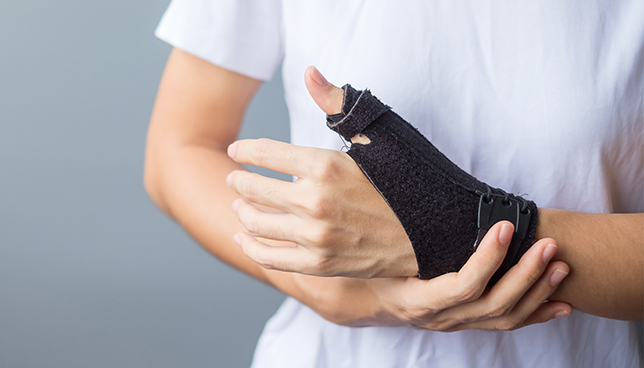
At some point during your life, you’ll likely be affected by a hand, wrist or elbow condition. Most of the time these conditions heal on their own with rest but, occasionally, they are more persistent and require medical attention. Here are five of the most common conditions we see at Edward-Elmhurst Health.

Carpal Tunnel Syndrome
Carpal tunnel syndrome occurs when the median nerve, one of the nerves to the hand, is compressed in a tunnel at level of the wrist. The pressure on your median nerve results in pain, numbness and tingling in your hand and fingers. Non-surgical treatment options include improving the ergonomics of your hand/wrist when using them and using a wrist splint to keep your wrist in a straight position to reduce compression of the nerve that can occur with prolonged wrist extension and flexion. When these nonsurgical treatment options fail to resolve the symptoms, carpal tunnel release surgery should be considered.

Arthritis
Arthritis occurs when the cartilage in our joints wear down. This can lead to pain, inflammation and stiffness. The joint at the base of thumb (CMC joint) can frequently become arthritic in people over time. Non-surgical management is usually the first line of treatment and may include bracing, anti-inflammatory medications, therapy and steroid injections. If non-surgical management does not provide adequate pain relief, surgery to remove arthritic portions may be considered.

Tennis Elbow
Tennis elbow – lateral epicondylitis – occurs when the tendon attachment to muscle in our forearm deteriorates and becomes inflamed. The pain is often localized to the bony prominence on the outer aspect of the elbow where the tendon attaches. Some patients will experience pain that radiates from the elbow into the back part of hand/wrist. In spite of its name, this condition can be seen in non-tennis players. Treatment usually includes rest, wearing a brace, strengthening exercises and injections. In some cases, surgery may be an option.

Golfer’s Elbow
Golfer’s elbow – medial epicondylitis – occurs when the tendon attachment to muscle in our forearm deteriorates and becomes inflamed. The pain is often localized to the bony prominence on the inner aspect of the elbow where the tendon attaches. Like tennis elbow, the condition can be caused by a number of activities, including wear and tear over time. Treatment options include rest, wearing a brace, strengthening exercises, injections and in some cases, surgery.

De Quervain's Tenosynovitis
De Quervain’s tenosynovitis occurs when the tendons that move the thumb become inflamed and irritated in a tunnel/sheath at the wrist. There may be tenderness at the tunnel/sheath and pain that radiate up the forearm. It’s often caused by overuse and is frequently seen in new mothers as a result of lifting and holding a baby. Treatment options include rest, anti-inflammatory medications, splinting and injections. In more severe cases, surgery to release the tendon sheath may be an option.

What people can do to help prevent these conditions
Because these conditions are the result of wear and tear over time, there isn’t a lot people can do to help prevent them. Taking steps, such as using good form, getting adequate rest and avoiding significant repetitive motion, may help you avoid hand, wrist and elbow conditions.

How EEH treats these conditions
Edward-Elmhurst Health’s team of orthopedic specialists can help diagnose and treat hand, wrist and elbow conditions. We are able to help patients get back to their daily activities without limitations. To learn more, visit us online or call 630-527-6363.






